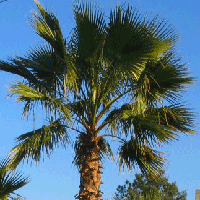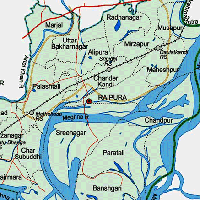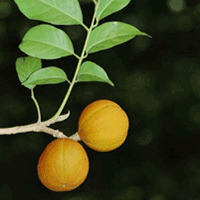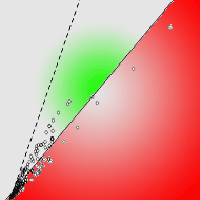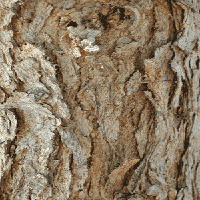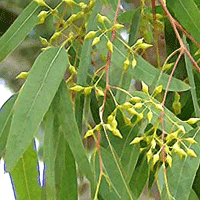
Status and socio-economic significance of wetland in the tropics: a study from Bangladesh
MP Rana (1) , MSH Chowdhury (2), S Sohel MSI Akhter (1), M Koike (2)
iForest - Biogeosciences and Forestry, Volume 2, Issue 5, Pages 172-177 (2009)
doi: https://doi.org/10.3832/ifor0512-002
Published: Oct 15, 2009 - Copyright © 2009 SISEF
Research Articles
Abstract
This study was carried out in the adjacent communities of the Hakaluki haor, the largest inland freshwater wetland of Bangladesh to explore their socio-economic status and haor-based livelihood dependency. Hakaluki haor is a poverty stricken region with 37% households falling into extreme poor group having monthly income of Tk 2 000.00 only. More than half of the community view Hakaluki haor as the vital source of livelihoods. The surrounding community is dependent on the haor in varying degree (15% totally dependent, 32% moderately and 53% less) with a variety of livelihood activities like fishing and related profession (32%), duck rearing (29%), cattle rearing (28%), fuel wood collection (6%), sand extraction (3%) and reed collection (2%). The average annual household incomes from fishing of naturally available fish, pisciculture and NTFPs collection are Tk 21 701.35, Tk 31 524.83 and Tk 2 704.80, respectively. The haor serves as the source of fuel for cooking to a majority of the community (48%). The respondents identified over-exploitation of fish resources, use of excessive pesticides and gradual increase of human settlement in and around the haor as the most threatened events. With the designation as Ecologically Critical Area (ECA) by the government, immediate attempts should be taken to ensure sustainable utilization of the haor resources. Development of integrated management plan with a provision of the participation of local stakeholders may become the possible way of conserving this wetland.This study was carried out in the adjacent communities of the Hakaluki haor, the largest inland freshwater wetland of Bangladesh to explore their socio-economic status and haor-based livelihood dependency. Hakaluki haor is a poverty stricken region with 37% households falling into extreme poor group having monthly income of Tk 2 000.00 only. More than half of the community view Hakaluki haor as the vital source of livelihoods. The surrounding community is dependent on the haor in varying degree (15% totally dependent, 32% moderately and 53% less) with a variety of livelihood activities like fishing and related profession (32%), duck rearing (29%), cattle rearing (28%), fuel wood collection (6%), sand extraction (3%) and reed collection (2%). The average annual household incomes from fishing of naturally available fish, pisciculture and NTFPs collection are Tk 21 701.35, Tk 31 524.83 and Tk 2 704.80, respectively. The haor serves as the source of fuel for cooking to a majority of the community (48%). The respondents identified over-exploitation of fish resources, use of excessive pesticides and gradual increase of human settlement in and around the haor as the most threatened events. With the designation as Ecologically Critical Area (ECA) by the government, immediate attempts should be taken to ensure sustainable utilization of the haor resources. Development of integrated management plan with a provision of the participation of local stakeholders may become the possible way of conserving this wetland.
Keywords
Authors’ Info
Authors’ address
S Sohel MSI Akhter
Department of Forestry and Environmental Science, Shahjalal University of Science and Technology, Sylhet-3114 (Bangladesh)
M Koike
Forest Policy Laboratory, Department of Forest Science, Faculty of Agriculture, Shinshu University, 8304 Minamiminow-Mura, Nagano-Ken 399-4598 (Japan)
Corresponding author
Paper Info
Citation
Rana MP, Chowdhury MSH, Sohel MSI Akhter S, Koike M (2009). Status and socio-economic significance of wetland in the tropics: a study from Bangladesh. iForest 2: 172-177. - doi: 10.3832/ifor0512-002
Academic Editor
Marco Borghetti
Paper history
Received: May 07, 2009
Accepted: Jul 21, 2009
First online: Oct 15, 2009
Publication Date: Oct 15, 2009
Publication Time: 2.87 months
Copyright Information
© SISEF - The Italian Society of Silviculture and Forest Ecology 2009
Open Access
This article is distributed under the terms of the Creative Commons Attribution-Non Commercial 4.0 International (https://creativecommons.org/licenses/by-nc/4.0/), which permits unrestricted use, distribution, and reproduction in any medium, provided you give appropriate credit to the original author(s) and the source, provide a link to the Creative Commons license, and indicate if changes were made.
Web Metrics
Breakdown by View Type
Article Usage
Total Article Views: 63547
(from publication date up to now)
Breakdown by View Type
HTML Page Views: 52374
Abstract Page Views: 3166
PDF Downloads: 6992
Citation/Reference Downloads: 34
XML Downloads: 981
Web Metrics
Days since publication: 5903
Overall contacts: 63547
Avg. contacts per week: 75.36
Citation Metrics
Article Citations
Article citations are based on data periodically collected from the Clarivate Web of Science web site
(last update: Mar 2025)
Total number of cites (since 2009): 9
Average cites per year: 0.53
Publication Metrics
by Dimensions ©
Articles citing this article
List of the papers citing this article based on CrossRef Cited-by.
References
Haor. In: “Banglapedia: the national encyclopedia of Bangladesh” (Islam S ed) Asiatic Society of Bangladesh, Dhaka, pp. 50-59.
Gscholar
Plant biodiversity (coastal and wetland biodiversity management project). Department of Environment, Government of the People’s Republic of Bangladesh.
Gscholar
Plant Resources of Haors and Floodplains; An Overview, IUCN-The World Conservation Union. Bangladesh Country office, Dhaka, Bangladesh.
Gscholar
Wetland conservation: a review of current issues and required action. In: “Freshwater Wetlands in Bangladesh: Issues and Approaches for Management”(Nishat A, Hussain Z, Roy MK, Karim A eds). IUCN-The World Conservation Union, Switzerland, pp. 45-53.
Gscholar
International Waterfowl and Wetlands Research. Action Programme for the Conservation of Wetlands in South and West Asia. In: “Freshwater wetlands in Bangladesh: issues and approaches for management” (Nishat A, Hussain Z, Roy MK, Karim A eds). IUCN- The World Conservation Union, Switzerland, pp. 112-119.
Gscholar
Socio-Economic Baseline Survey of Pagnar and Sanuar - Dakuar Haors, Published by IUCN, Bangladesh.
Gscholar
An overview of African wetlands. In: “Wetlands, biodiversity and the Ramsar convention” (Hails AJ ed). Ramsar Convention Bureau, Switzerland, pp. 69-75.
Gscholar
Plant diversity and their conservation in freshwater wetlands. In: “Freshwater wetlands in Bangladesh: issues and approaches for management” (Nishat A, Hussain Z, Roy MK, Karim A eds). IUCN, Switzerland, pp. 75-104.
Gscholar
Poverty status of a critical wetland area: Hakaluki Haor. Published by IUCN, Dhaka, Bangladesh.
Gscholar
Wetlands of Bangladesh Holiday Printers Ltd., Bangladesh.
Gscholar
Wetlands of Bangladesh. Bangladesh Centre for Advanced Studies in associated with Nature Conservation Movement.
Gscholar
Wetlands of Bangladesh, Holiday Printers Ltd., Bangladesh.
Gscholar
Coastal and wetland biodiversity management project document 2006. Ministry of Environment and Forests, Government of Bangladesh. Prepared & Submitted by: IUCN-Bangladesh. In association with Center for natural resource studies.
Gscholar
Freshwater wetlands in Bangladesh: Status and issues. In: “Freshwater wetlands in Bangladesh - issues and approaches for management” (Nishat A, Hussain Z, Roy MK, Karim A eds). IUCN, Switzerland, pp. 75-104.
Gscholar


